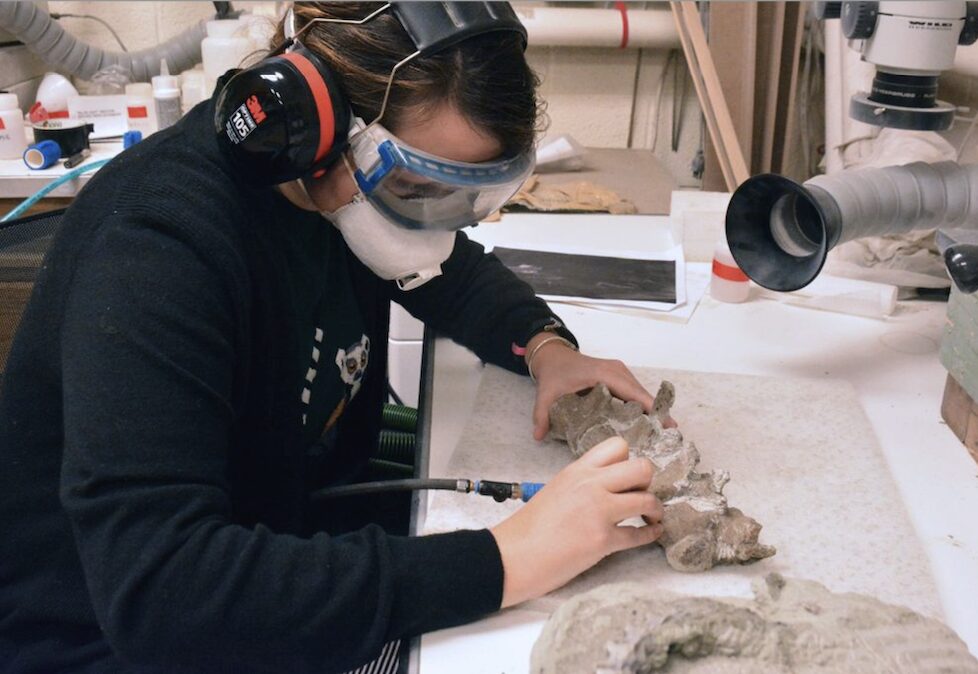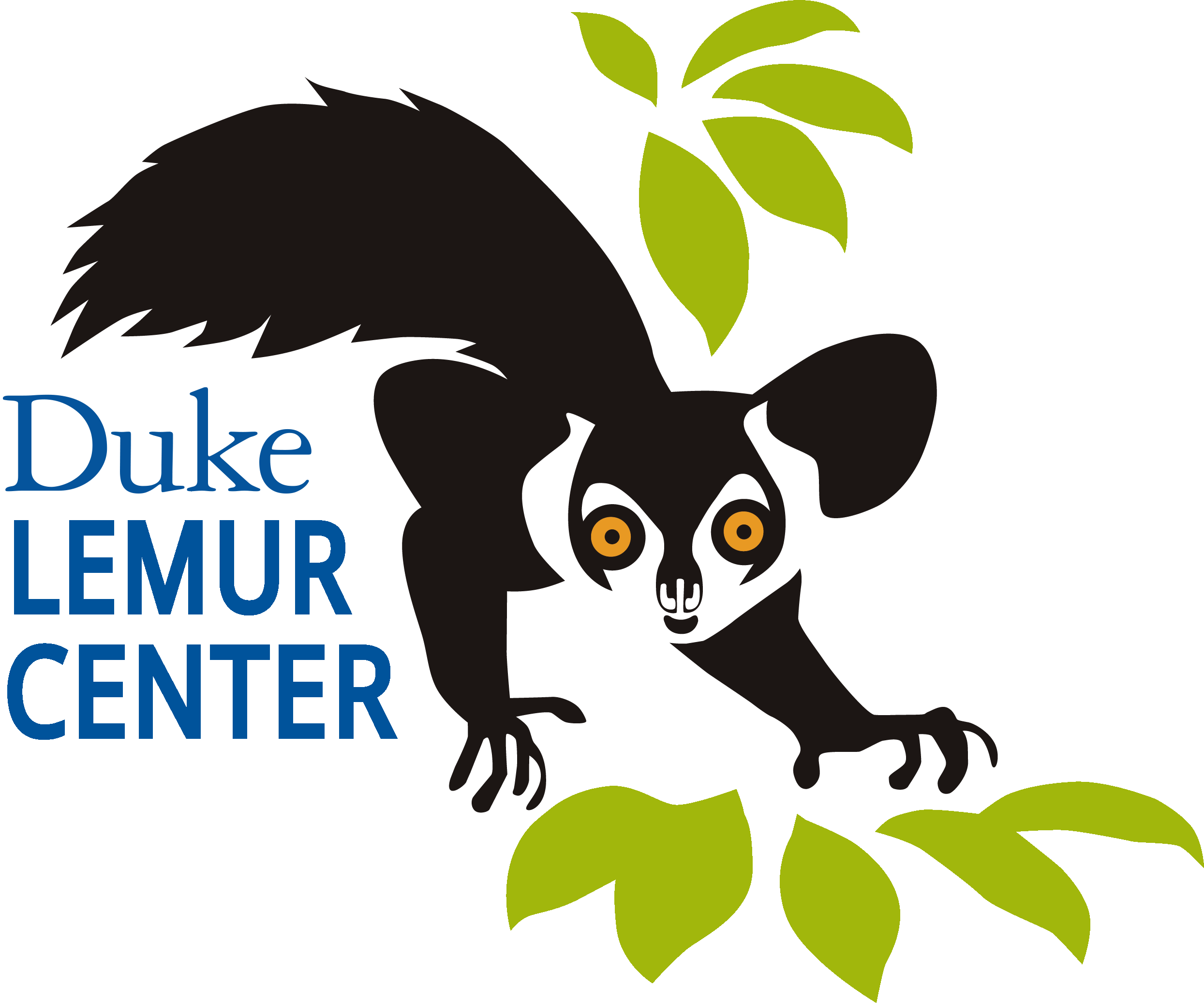By Stephen Schramm, Working@Duke Senior Writer. Originally published in Duke Today on February 19, 2025. Read the original and see the accompanying photos here.

Karie Whitman of the DLC Museum of Natural History works on a fossil in the facility’s lab. Photo by Stephen Schramm.
Monthly open houses at the Duke Lemur Center Museum of Natural History offer glimpses of work behind evolutionary discoveries
As the Madre de Dios River flows through Peru toward the Amazon, it eats away at the landscape, slowly turning rock into mud. Where the river bends and curves, the mud occasionally contains pieces of fossilized bone and teeth freed from the rock by erosion.
Through connections with collaborators in Peru, bags of this mud are sent to the Duke Lemur Center Museum of Natural History. There, Duke’s museum staff members meticulously rinse, dry and sift through the material, searching for tiny fossil fragments in search of clues about our distant history.
So far, all of the fossils found in the mud – some of them are around 32 million years old – are remnants of the bones or teeth of ancient rodents.
But with early primates potentially arriving in South America around the same time, if a primate fossil is found, it would fill important gaps in our understanding of evolutionary history.
“Just one little tooth could tell an incredible story,” said Matt Borths, Duke Lemur Center Museum of Natural History Curator and Adjunct Assistant Professor of Evolutionary Anthropology. “But finding that tooth is like looking for a needle in a haystack.”
The spirit of discovery defines the work that unfolds in the one-story brick building on Broad Street, the Duke Lemur Center Museum of Natural History’s home since it moved from the Duke Lemur Center’s main facility in 2000,
On the last Saturday of each month, the museum hosts open house events, welcoming community members of all ages to explore its work. At the next open house, which will be from 1-4 p.m. on Saturday, February 22, visitors can handle fossils and watch as museum staff reveal the remains of animals that lived tens of millions of years ago.
“In a lot of museums, you only get to see the exhibits,” said Fossil Preparator Karie Whitman, who has worked at Duke since 2020. “It’s cool that we get to show people how we work with these fossils, how we get them out of the rock and how we find them.”
The museum features a small exhibition space with fossilized primate skeletons and ancient bone fragments that help tell the story of how lemurs – and other primate relatives – evolved. But beyond the display cases, the museum’s four staff members work alongside students and volunteers to care for and share the wonders in an expansive collection of fossils.
The museum’s collection, which features more than 35,000 fossils, was initiated in the late 1970s by Elwyn Simons, a pioneering paleontologist and former Duke Lemur Center Director who passed away in 2016. The collection includes a wide range of specimens, from primates to snakes, turtles and sharks.
Available for study by researchers at Duke and elsewhere, the collection is housed in crowded rooms and neatly organized cases standing in nearly every corner of the building.
Virtual 3-D models of several specimens from the collection are available online for study by experts worldwide. The high-definition renderings were made using the sophisticated CT scanners at Duke’s Shared Materials Instrumentation Facility.
And more of the museum’s fossils have yet to be discovered, still trapped in blocks of sandstone brought back by museum team members from annual summer trips to Wyoming.
In the fossil preparation lab at the rear of the museum, Whitman uses small pneumatic tools that resemble miniature jackhammers to deftly carve away stone and uncover fossils such as the recently unearthed 50-million-year-old skeleton of a now-extinct mammal called a Metacheiromys.
The skeleton’s sturdy arms and claws show that the Metacheiromys, which is an ancestor of the pangolin, a small mammal found mostly in Africa and Asia, likely dug through soil for its food while the ancestors of monkeys and lemurs hopped through the trees above.
“These are our relatives,” Borths said of the fossils in the museum’s collection. “These are the ancestors of lemurs, so we want to bring people in to meet them because this belongs to all of us.”

